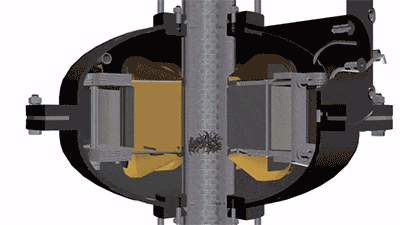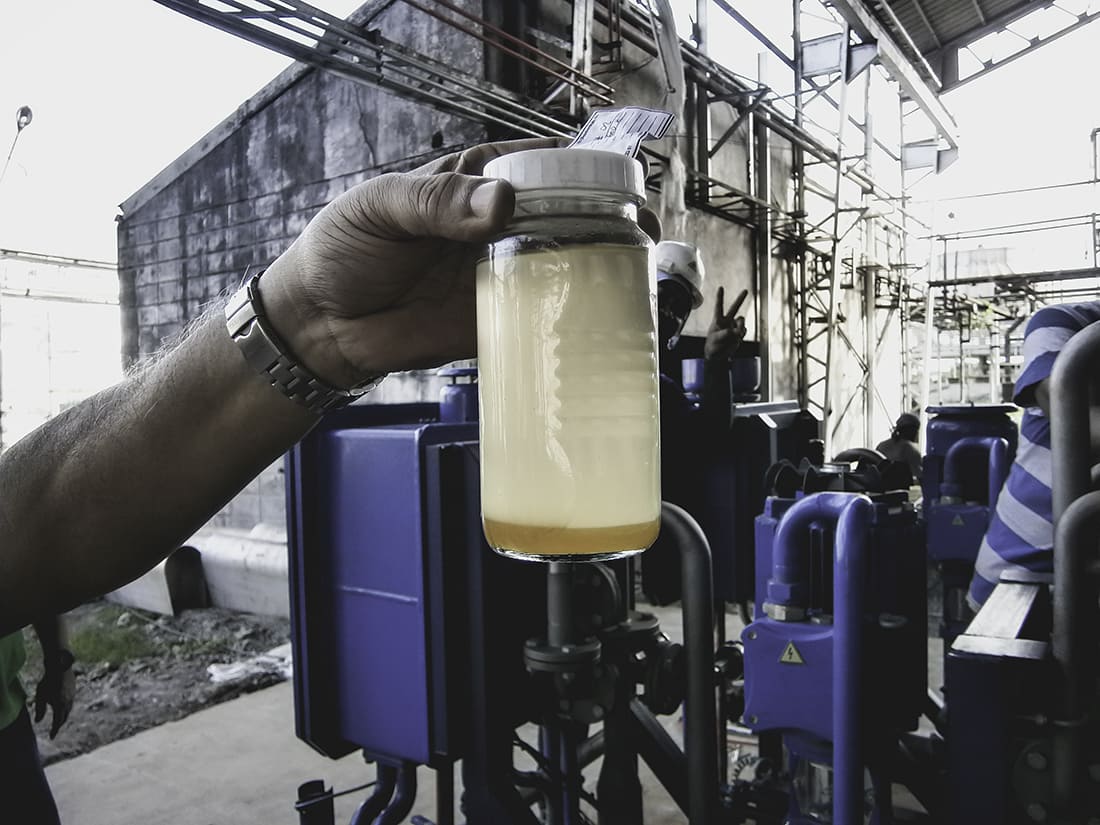In this article, we will discuss biodiesel production using GlobeCore technological line in which the function of a reactor is performed by a vortex layer device of AVS type. This technological line can be used to produce biodiesel from a wide variety of raw materials ranging from vegetable oils to animal fats.
From the environmental perspective, it is of some interest to use various wastes for biodiesel production and the disposal of those wastes is associated with a number of inconveniences. For example, such wastes include overdone vegetable oil which is formed in large quantities at various bakeries and restaurants, as well as sour chicken fats. Drawing on the example of the latter, we will discuss the process of biodiesel production according to GlobeCore technology.
How is chicken fat formed and what is to be done to that?
Chicken fat is formed in large quantities when poultry are slaughtered or when carcasses are ultra-processed at poultry factories. This waste can be used in production of feedstuff for domestic animals to enhance the tastiness of finished products, but sometimes it is illegally thrown out or washed away with wastewater polluting the water bodies and soil.
The situation can be changed if we recall that chicken fats can be an excellent raw material for biodiesel production. Furthermore, they require no additional purification like vegetable oils and come much cheaper.
Biodiesel production technologies
Obtaining biodiesel fuel requires replacing glycerin with alcohol in the glycerol esters contained in chicken fat. This replacement occurs during the transesterification reaction (fat transesterification). It results in formation of methyl ether, i.e. the biodiesel we need, and glycerin which is used in the pharmaceutical, as well as paint and varnish industries.
GlobeCore has developed a complex for biodiesel fuel production from chicken fat which can be used both directly at poultry factories and by representatives of private businesses interested in deriving biodiesel from cheap raw materials. We have implemented new technologies and design solutions that allowed making the complex compact and optimizing the biodiesel production.
Biodiesel production equipment
Let us discuss biodiesel production using this complex in greater detail. The complex consists of several sections:
- batching and premixing section;
- transesterification section;
- separation section;
- purification section.
The dosing and premixing section includes a hydrodynamic cavitation unit. The mixer of the unit is made in the form of an injector that ends with a turbulator. The pump delivers preheated chicken fat to the mixer. In the mixer injection chamber, subatmospheric pressure is developed, and there occurs underpressure due to which alcohol and catalyst are sucked into the mixer in required proportions. Passing through the mixer turbulator, the ingredients are combined into a single stream and enter the transesterification section.
The transesterification section consists of a vortex layer device — the device where a rotating electromagnetic field is created in the operating chamber by means of an inductor. Driven by this field, ferromagnetic particles move along complex trajectories in the chamber and collide with one another, with the chamber walls, and with particles of processed substance. Direct impact effects, electromagnetic processing, and emerging cavitation in the device operating chamber cause microdispersed mixing and completion of the transesterification reaction which lasts for a few seconds. This is the main difference between GlobeCore line and “barrel” technologies. The reaction proceeds fast and does not require acceleration due to blending in excess methanol which should be distilled off thereafter using additional equipment.
Upon completion of the transesterification reaction, the obtained mixture is continuously fed into the separation tank.
Heavier glycerin settles down, and lighter biodiesel rises up. After separation, both fractions are pumped out by different pumping groups. Glycerin enters an external storage tank, and biodiesel passes through the purification section. Purification is required, because a catalyst merely accelerates the chemical reaction of transesterification and does not participate therein. Keeping it in the fuel will corrode the engine. Catalyst residues are removed when biodiesel passes through a layer of special adsorbent. If the acidity of chicken fat is high, the transesterification reaction is carried out in two stages with the purpose of extracting as much biodiesel as possible from the feedstock. At the outlet, we obtain finished biodiesel fuel with a good flammability and a high cetane number to be used in diesel engines.
Thus, the use of GlobeCore technologies makes it possible to arrange the processing of environmentally hazardous waste from poultry factories and to reduce the amount of harmful emissions from diesel powered vehicles at the same time through applying alternative fuels.
Processes in the operating chamber of a vortex layer device

- Acoustic waves and cavitation accelerate mass transfer processes.
- Each ferromagnetic particle is a kind of microelectrolyzer the continuous operation of which saturates the device operating chamber with ions of various polarity which allows accelerating the chemical reactions.
- Magnetostriction of ferromagnetic particles which occurs during their magnetization reversal. The linear dimensions of the particles change with great frequency which results in formation of high-strength pulses that intensify chemical diffusion processes.
- The cumulative effect of magnetostrictive pulses, cavitation, induction currents, microarcs, fast ferromagnetic particles motion, and other factors enlarges the interaction surface (phase interface) by several orders of magnitude. An increase in surface energy is observed due to which there occurs a drastic acceleration of transesterification processes.
The use of a vortex layer device as a reactor in biodiesel fuel production also allows reducing the catalyst concentration and carrying out the transesterification at a lower temperature of the reaction mixture.
Advantages of vortex layer devices in the process of biodiesel fuel production
Now, let us tell you a little bit about the advantages of the devices as such. Vortex layer devices are compact equipment that can be easily integrated into existing complexes for biodiesel fuel production in order to modernize them by replacing large-sized tanks and energy-consuming mechanical mixers. A vortex layer device can operate in a stream, and depending on the model (AVS-100 or AVS-150), the power requirement is 4.5 and 9.5 kW respectively. Furthermore, the devices are easy to maintain and operate, and their service life lasts for decades.
For obtaining further information or getting advice from GlobeCore technical professionals, please use the contact details of the appropriate website section.

